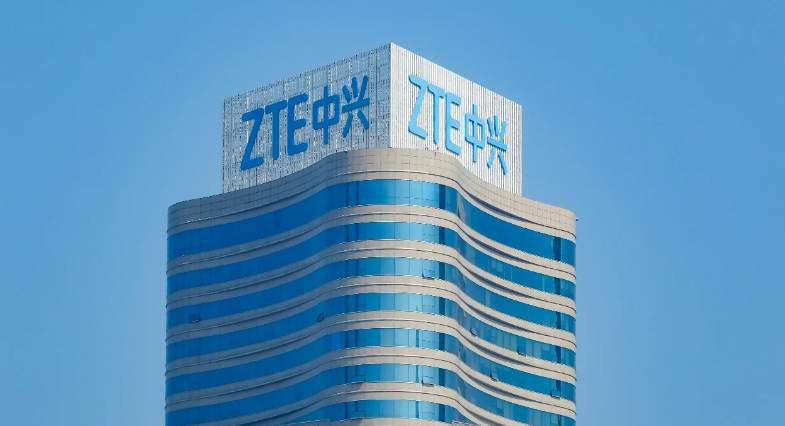Revenue of 121.3 billion: How ZTE Corporation is Seizing the AI Era
ZTE Corporation’s 2024 Annual Report shows a revenue of 121.3 billion yuan, a net profit of 8.42 billion yuan, and a non-recurring net profit of 6.18 billion yuan. When looking into the details of revenue, in 2024, ZTE’s domestic market generated 82.01 billion yuan, accounting for 67.6%, while the international market generated 39.29 billion yuan, accounting for 32.4%. The company’s revenue came from three primary sectors: 70.33 billion yuan from the operator network, 18.56 billion yuan from the government and enterprise sector, and 32.41 billion yuan from the consumer business, with the respective shares being 58.0%, 15.3%, and 26.7%.Hardware + Software Services = Industry Leadership.When discussing the operator network business, ZTE expressed that the company would shift from “full connectivity” to “connectivity + computing power” to actively expand market space and meet customer demands. In the connectivity domain, ZTE’s wireless and wired product ecosystems have been steadily improving. For example, the company’s cumulative shipment of 5G base stations and 5G core networks has ranked second globally for five consecutive years. ZTE’s 5G-A technology has also been flexibly applied in new fields such as low-altitude economy and digital tourism. Currently, ZTE has more than 100 low-altitude sensing pilot projects across 25 provinces in China and has built the country’s first 400G inter-provincial backbone network, connecting national computing hubs. Correspondingly, due to its technological accumulation, ZTE’s fixed-line products are also well received in international markets.
According to related reports, over 300 operators in more than 100 countries worldwide have deployed ZTE’s products, which has significantly contributed to the 50G PON pilot project.Contributions in “Hard Engineering” and “Soft Services”.Beyond hardware contributions, ZTE’s investments in “soft services” should not be overlooked. To ensure continuous follow-up on related businesses and to diversify services for telecom customers, ZTE chose “intelligent computing” as one of its core focus areas in 2024. Leveraging its data intelligence capabilities, the company developed a “full-stack, full-scenario intelligent computing solution” incorporating computing power, networks, terminals, and more. This decision allowed ZTE to deepen its traditional business while also making significant strides in new emerging fields.With the “Distributed High-Performance Domestic Intelligent Computing Resource Pool” construction plan underway, ZTE is also advancing the domestic computing power ecosystem by participating in the Wan and Qian computing pools. ZTE has achieved self-evolution through AI. In terms of government and enterprise business, ZTE successfully capitalized on the digitalization and intelligence trends in 2024, strengthening product and service capabilities while integrating existing resources to advance cooperation with key industry clients. ZTE’s government and enterprise business revenue grew by 36.7% year-on-year, and domestic government and enterprise business revenue increased by nearly 60%.

To achieve such remarkable results, it was not enough to rely solely on the leadership’s correct predictions of “industry nodes.” Rapid adaptation of the business ecosystem is key to turning these predictions into action and establishing competitive advantages.For example, as AI technology rapidly grows, sectors such as manufacturing, energy, and government have incorporated AI into their development strategies to accelerate digital and intelligent upgrades. However, challenges such as complex deployment, system incompatibility, and data silos have emerged as new difficulties brought by new technologies. To address these issues, ZTE not only developed its own Nebula large model and other products but also established full-stack, full-scenario intelligent computing solutions and intelligent computing laboratories. These efforts help lower the costs of AI technology adoption for government and enterprise customers and promote the development of the domestic intelligent computing application ecosystem.On the Consumer Side.ZTE’s technical advantages in the AI era have also benefited consumer products such as smartphones and cloud computers. With the launch of ZTE’s internal “AI for All” full-scenario smart ecosystem initiative, its product competitiveness for individuals and families has evolved. In 2024, ZTE’s household terminals, cloud computers, smartphones, and mobile internet products all experienced revenue growth, driving a 16.1% year-on-year increase in consumer business revenue.Navigating Version Updates and Market Changes.What does it feel like to be ahead of version updates?
In 2024, with the end of the large-scale 5G construction phase, the supply-demand model in related markets also changed. For instance, the total spending of China’s three major telecom operators last year reached 334 billion yuan, with a more than 20% reduction in 5G-related investments. The sharp drop in user demand was not good news for telecom equipment suppliers. According to data from market research firm Dell’Oro, the global telecom equipment industry’s revenue dropped by 17% in the first half of 2024. In response to these changes in the market environment, ZTE’s reaction has been commendable. By focusing on technology, products, and services, ZTE has dynamically adjusted its revenue structure and strengthened its advantage in the AI ecosystem. The revenue share from its government, enterprise, and consumer sectors increased to 42%, with smartphone product revenue growing by more than 40%.Looking Ahead.Over the next three years, it is projected that investments in AI by China’s three major telecom operators will reach 100 billion yuan, with leading Chinese internet companies investing over 500 billion yuan in AI. As the AI ecosystem matures, concepts like intelligent computing centers, network construction, and AI terminals are expected to flourish. This trend aligns with ZTE’s ongoing efforts. In 2024, ZTE’s R&D investment amounted to 24.03 billion yuan, about 20% of its total revenue. Over the past six years, ZTE has invested a cumulative total of 117.07 billion yuan in R&D. This investment has resulted in over 5,000 AI patent applications and allowed ZTE to embrace the AI wave ahead of time, positioning itself as a key player in future market expansion.